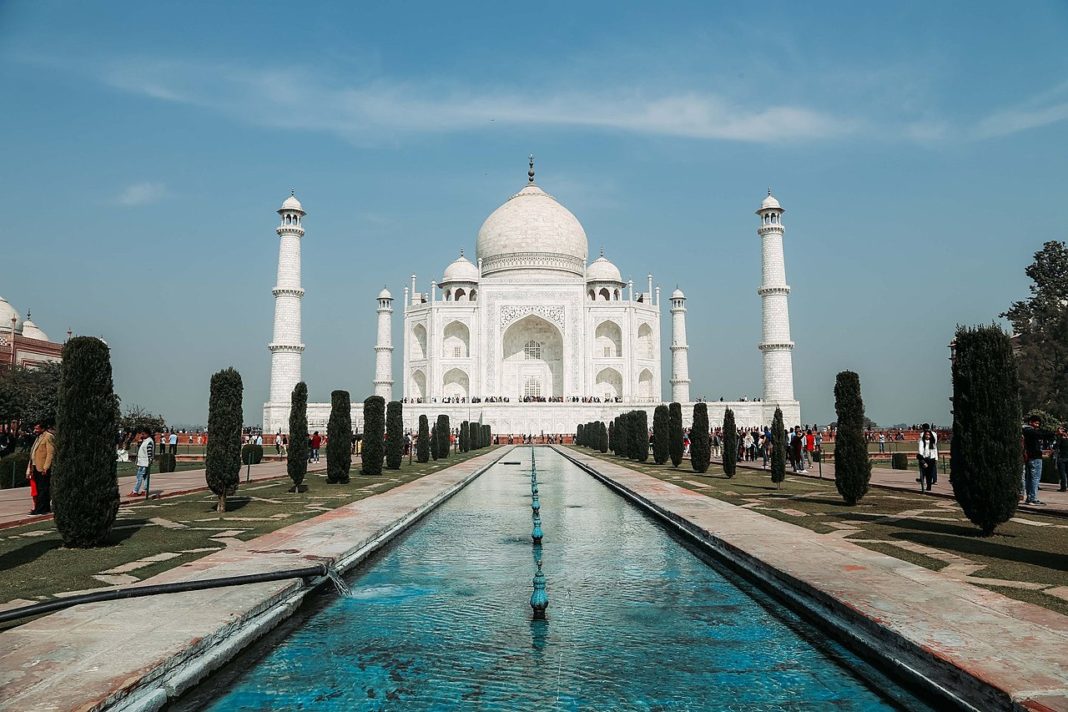The Taj Mahal is an Islamic ivory-white marble mausoleum on the right bank of the river Yamuna in the Indian city of Agra.
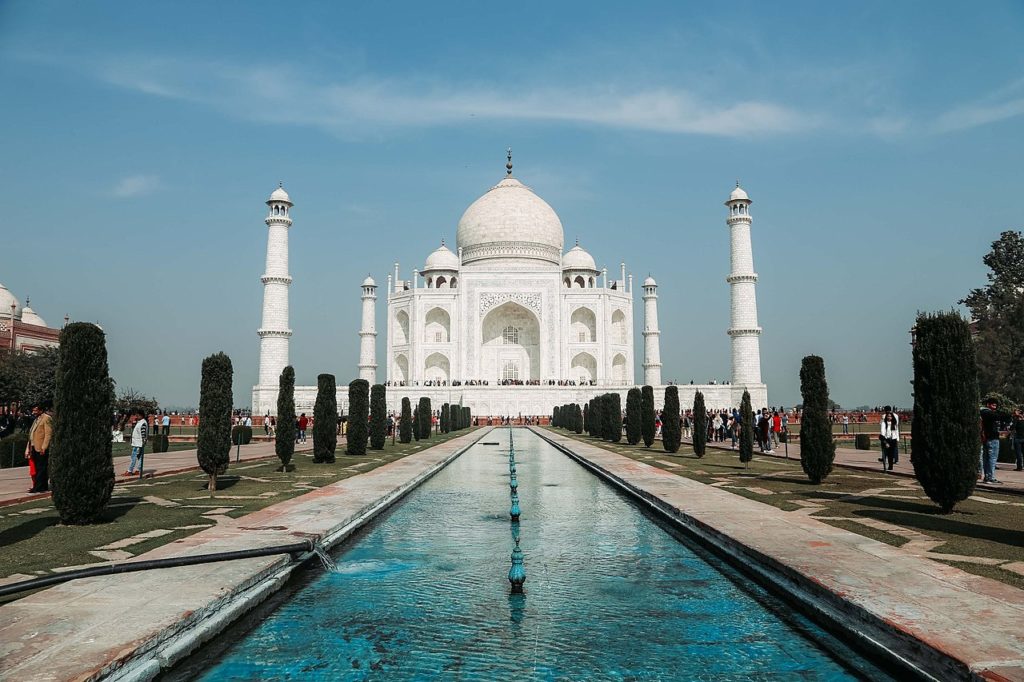
The Taj Mahal was commissioned by Shah Jahan in 1631, to be built in the memory of his wife Mumtaz Mahal, who died on 17 June that year, while giving birth to their 14th child, Gauhara Begum. Construction started in 1632, and the mausoleum was completed in 1648, while the surrounding buildings and gardens were finished five years later. The imperial court documenting Shah Jahan’s grief after the death of Mumtaz Mahal illustrates the love story held as the inspiration for the Taj Mahal. Along with being a renowned symbol of love, the Taj Mahal is also a symbol of Shah Jahan’s wealth and power, and the fact that the empire had prospered under his rule.
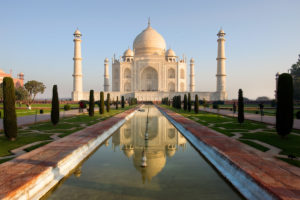
The tomb is the central focus of the entire complex of the Taj Mahal. It is a large, white marble structure standing on a square plinth and consists of a symmetrical building with an iwan (an arch-shaped doorway) topped by a large dome and finial. Like most Mughal tombs, the basic elements are Indo-Islamic in origin.
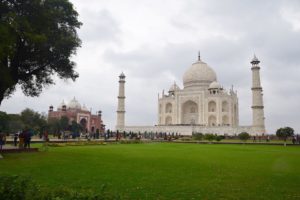
The most spectacular feature is the marble dome that surmounts the tomb. The dome is nearly 35 meters high which is close in measurement to the length of the base, and accentuated by the cylindrical “drum” it sits on, which is approximately 7 meters high. Because of its shape, the dome is often called an onion dome or amrud (guava dome). The top is decorated with a lotus design which also serves to accentuate its height. The shape of the dome is emphasized by four smaller domed chattris (kiosks) placed at its corners, which replicate the onion shape of the main dome.
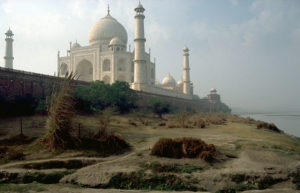
The Taj Mahal was designated as a UNESCO World Heritage Site in 1983 for being “the jewel of Muslim art in India and one of the universally admired masterpieces of the world’s heritage”. It is regarded by many as the best example of Mughal architecture and a symbol of India’s rich history. The Taj Mahal attracts more than 6 million visitors a year and in 2007, it was declared a winner of the New 7 Wonders of the World (2000–2007) initiative.
According to Wikipedia





